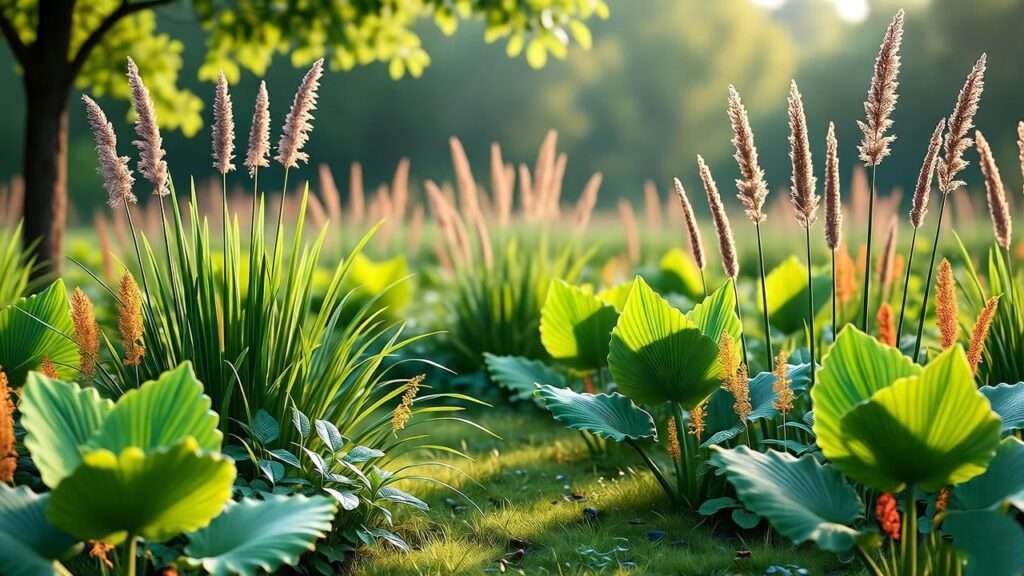Imagine turning your soggy backyard into a lush, vibrant wetland garden teeming with life! Swamp plants, with their unique ability to thrive in waterlogged soils, are the secret to creating a stunning and sustainable landscape. Whether you’re dealing with a waterlogged yard, a pond edge, or a rain garden, these plants offer beauty, low maintenance, and ecological benefits. In this guide, we’ll explore the top 10 swamp plants to transform your space, complete with expert care tips, design ideas, and environmental insights. Get ready to dive into the world of wetland gardening and create an eco-friendly oasis! 🌍
Section 1: Why Choose Swamp Plants for Your Garden? 🌾
The Beauty and Benefits of Swamp Plants 🌼
Swamp plants bring a unique charm to any garden. Their lush foliage, vibrant blooms, and varied textures create a dynamic landscape that evolves with the seasons. Beyond aesthetics, these plants are environmental powerhouses. They filter water, prevent soil erosion, and provide habitats for wildlife like birds, frogs, and pollinators. For gardeners, their low-maintenance nature is a bonus—once established, swamp plants thrive with minimal care, making them ideal for busy homeowners or eco-conscious landscapers.
Dr. Emily Harper, a wetland ecologist at the University of Florida, notes, “Swamp plants are vital for healthy ecosystems. They purify water and support biodiversity, making them a must-have for sustainable gardens.” By choosing these plants, you’re not just enhancing your yard—you’re contributing to a healthier planet. 🌎
Who Should Grow Swamp Plants? 🌿
Swamp plants are perfect for anyone with wet or poorly drained soil. If your yard stays soggy after rain or you have a pond or stream, these plants are your solution. They’re also ideal for eco-conscious gardeners looking to create rain gardens or restore natural wetlands. Whether you’re a beginner or a seasoned gardener, swamp plants address common challenges like waterlogged soils while adding beauty and biodiversity to your space.
Section 2: Understanding Swamp Plants and Their Needs 🪴
What Are Swamp Plants? 🌊
Swamp plants, also known as marsh or wetland plants, are species that thrive in water-saturated soils or shallow standing water. Unlike fully aquatic plants, they grow at the water’s edge or in moist soil, making them versatile for marginal zones. These plants are adapted to various climates and can be grown in USDA zones 3–10, depending on the species. Their ability to tolerate “wet feet” makes them unique in the gardening world.
Key Growing Conditions for Swamp Plants 💧
To ensure your swamp plants flourish, focus on three key factors: soil, water, and sunlight. Most prefer rich, organic soils with high moisture retention. Test your soil’s drainage by digging a 12-inch hole and filling it with water—if it holds water for hours, it’s ideal for swamp plants. Aim for a slightly acidic to neutral pH (5.5–7.0).
Water needs vary, but most swamp plants thrive in consistently moist soil or shallow water (up to 12 inches deep). Sunlight preferences range from full sun to partial shade, so check each plant’s requirements.
Tip Box: Testing Soil Drainage and pH
- Drainage Test: Dig a 12-inch hole, fill it with water, and time how long it takes to drain. Slow drainage (4+ hours) is perfect for swamp plants.
- pH Test: Use a home pH testing kit or send a sample to your local extension service. Adjust with organic compost if needed.
Section 3: Top 10 Swamp Plants for Your Wetland Garden 🌸
Plant Profiles with Care Tips 🌿
Here are 10 swamp plants that will elevate your wetland garden, each with detailed care instructions and benefits.
1. Bald Cypress (Taxodium distichum) 🌳
This majestic deciduous conifer boasts feathery, needle-like foliage that turns russet in fall. Growing up to 70 feet tall, it’s perfect for large wetland gardens.
- Care Tips: Plant in full sun in standing water or moist soil. It tolerates flooding and poor drainage. Prune dead branches in late winter.
- Benefits: Stabilizes soil, supports bird nesting, and adds dramatic height.
- Pro Tip: Pair with ferns for a lush, layered look.
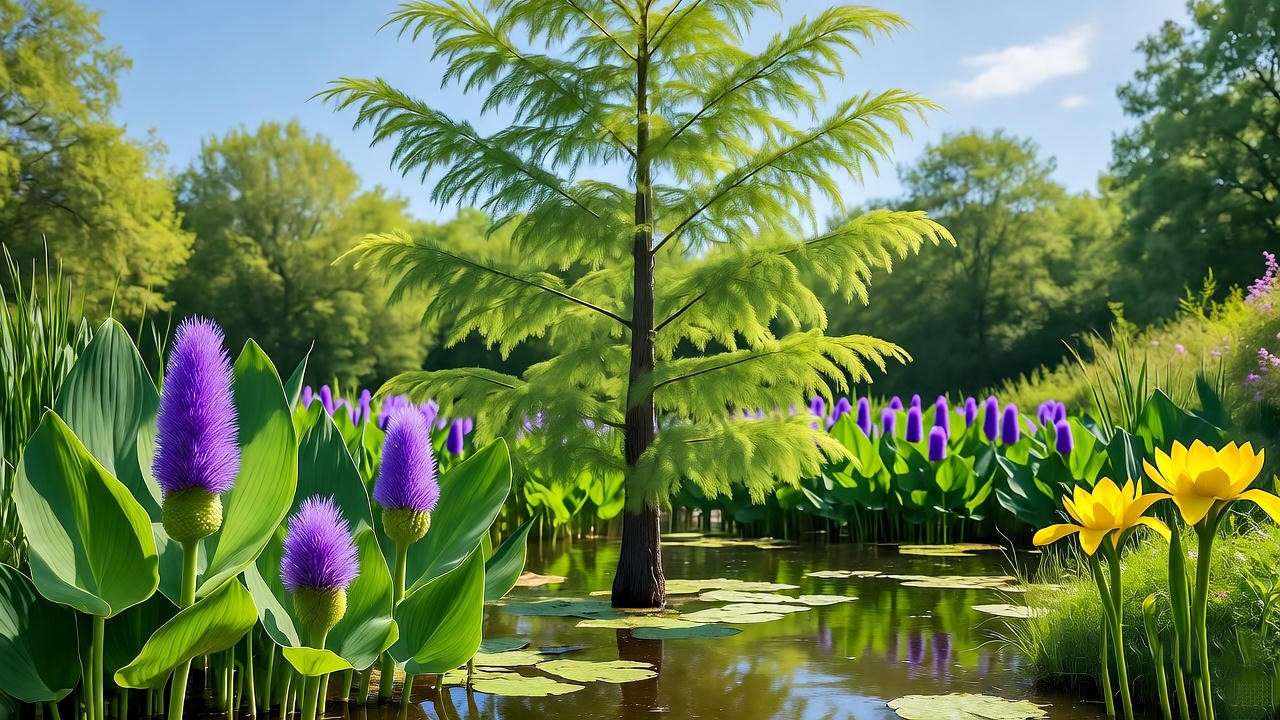
2. Marsh Marigold (Caltha palustris) 🌼
Bright yellow blooms light up spring gardens, growing 1–2 feet tall.
- Care Tips: Plant in partial shade in shallow water (2–4 inches). Keep soil consistently wet. Divide clumps every 3 years to maintain vigor.
- Benefits: Attracts bees and butterflies, adding early-season color.
- Pro Tip: Combine with water iris for a vibrant spring display.
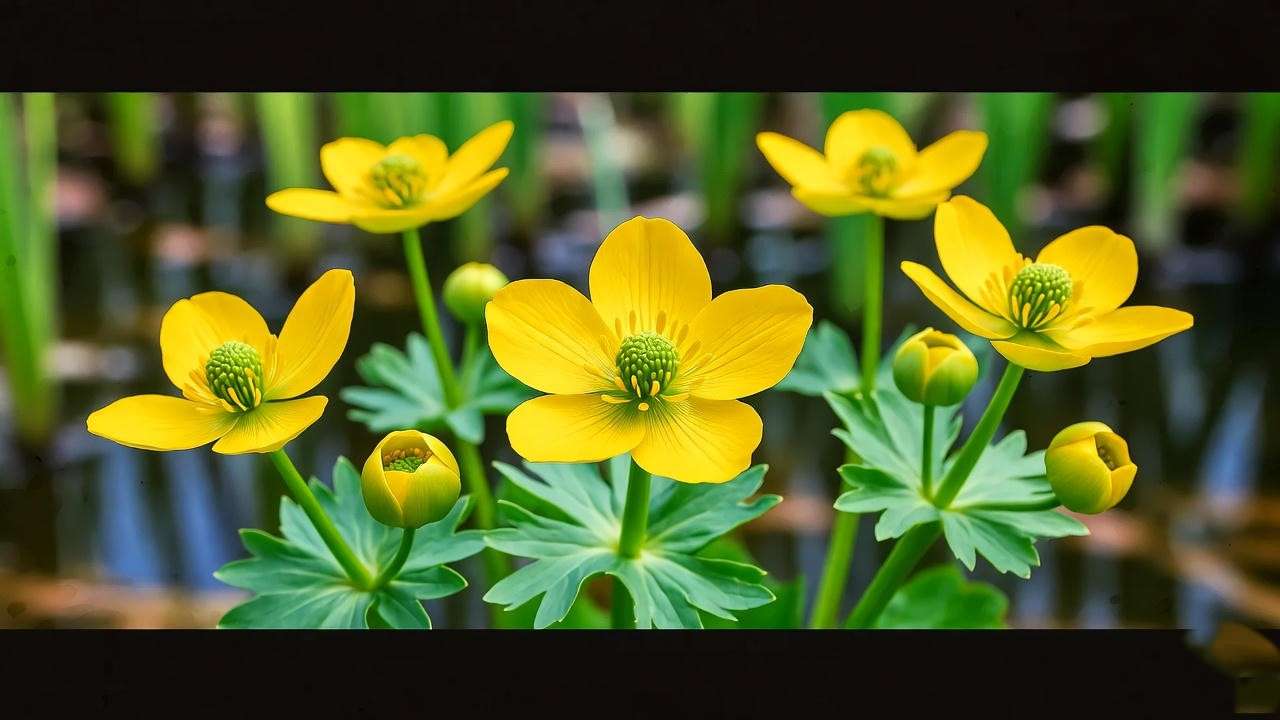
3. Pickerelweed (Pontederia cordata) 💜
This aquatic perennial features heart-shaped leaves and spiky purple flowers, reaching 3–4 feet.
- Care Tips: Plant in full sun in water up to 12 inches deep. Remove faded flowers to encourage reblooming.
- Benefits: Supports fish and amphibians, enhancing pond ecosystems.
- Pro Tip: Use as a focal point near pond edges.
4. Water Iris (Iris pseudacorus) 🌾
Known for its striking yellow or purple blooms, this iris grows 2–3 feet tall.
- Care Tips: Plant in full sun to partial shade in wet soil or shallow water. Divide rhizomes every 3–4 years.
- Benefits: Filters water and attracts pollinators.
- Pro Tip: Plant near streams for a naturalized look.
5. Cattail (Typha latifolia) 🪶
Iconic for its tall, brown spikes, cattails grow 4–8 feet tall.
- Care Tips: Plant in full sun in moist soil or shallow water. Contain aggressive spread with pots or barriers.
- Benefits: Provides habitat for birds and insects.
- Pro Tip: Use in large spaces to avoid overcrowding.
6. Swamp Milkweed (Asclepias incarnata) 🦋
With its clusters of pink flowers, this plant grows 3–5 feet tall and is a magnet for monarch butterflies.
- Care Tips: Plant in full sun to partial shade in moist soil. Water regularly during the first year to establish roots. Deadhead to prolong blooming.
- Benefits: Supports pollinator conservation, especially monarchs.
- Pro Tip: Pair with buttonbush for a pollinator-friendly garden.
7. Lizard’s Tail (Saururus cernuus) 🐍
This plant features drooping white flower spikes and heart-shaped leaves, reaching 2–4 feet.
- Care Tips: Thrives in partial shade to full sun in shallow water or wet soil. Cut back in late fall to encourage new growth.
- Benefits: Adds unique texture and supports aquatic ecosystems.
- Pro Tip: Use in shaded corners for a soft, cascading effect.
8. Blue Flag Iris (Iris versicolor) 🌈
Vibrant blue-purple flowers make this iris a standout, growing 2–3 feet tall.
- Care Tips: Plant in full sun to partial shade in wet soil. Divide every 3–4 years to prevent overcrowding.
- Benefits: Attracts hummingbirds and bees, enhances water edges.
- Pro Tip: Combine with marsh marigold for a colorful contrast.
9. Sweetflag (Acorus calamus) 🌱
This grass-like plant with aromatic roots grows 2–3 feet tall.
- Care Tips: Plant in partial shade in shallow water or moist soil. Trim back in spring to promote new growth.
- Benefits: Offers medicinal properties and stabilizes soil.
- Pro Tip: Use as a border plant for a tidy appearance.
10. Buttonbush (Cephalanthus occidentalis) 🌺
Known for its spherical white blooms, this shrub grows 5–12 feet tall.
- Care Tips: Plant in full sun in wet soil or shallow water. Prune in late winter to maintain shape.
- Benefits: Attracts butterflies, bees, and birds.
- Pro Tip: Place near seating areas for its sweet fragrance.
Section 4: How to Design a Wetland Garden with Swamp Plants 🏞️
Planning Your Wetland Garden Layout 🌍
Creating a wetland garden starts with assessing your space. Measure the area, note water depth, and evaluate drainage. For small spaces (e.g., 10×10 feet), focus on low-growing plants like marsh marigold or lizard’s tail. Larger areas can accommodate bald cypress or buttonbush for height and drama.
Design with layers: place taller plants like cattails or bald cypress at the back, mid-height plants like water iris in the middle, and low-growers like sweetflag at the edges. Add hardscaping elements like rocks or a small bridge to enhance accessibility and aesthetics.
Example: Sample 10×10 ft Wetland Garden Layout
- Back: Bald cypress (1 tree) for height.
- Middle: Pickerelweed and water iris (3–5 plants each) for color.
- Front: Marsh marigold and sweetflag (5–7 plants) for ground cover.
- Accents: Add a stone path and a small bench for charm.
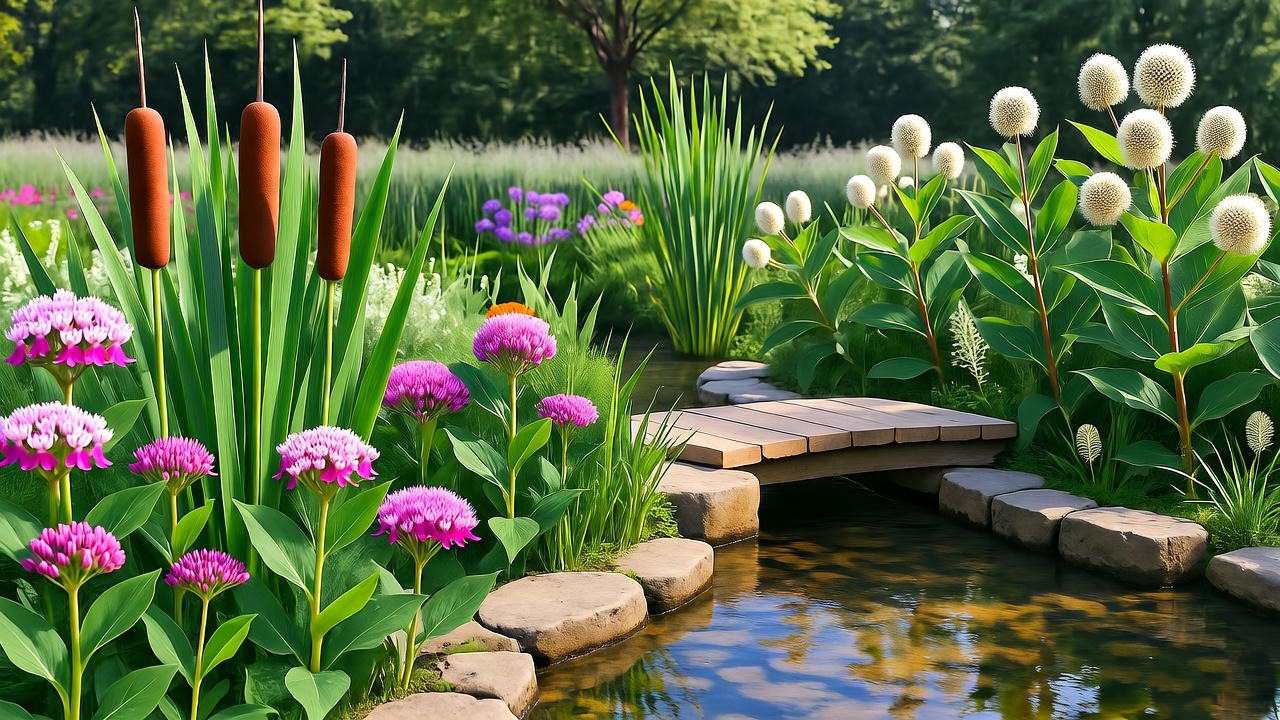
Companion Planting and Biodiversity 🐝
Companion planting enhances both beauty and ecology. Pair cattails with water lilies for a classic wetland look, or combine swamp milkweed with buttonbush to attract pollinators. Ferns and sedges complement swamp plants by adding texture and stabilizing soil.
Biodiversity benefits include natural pest control and healthier ecosystems. For example, swamp milkweed attracts predatory insects that reduce pest populations, while cattails provide nesting sites for birds. A diverse garden is not only beautiful but also resilient.
Section 5: Care and Maintenance for Swamp Plants 🛠️
Essential Care Tips for Long-Term Success 🌿
Swamp plants are low-maintenance but require consistent care to thrive. Ensure soil stays moist but not oversaturated—check drainage regularly to prevent root rot. Prune dead or damaged foliage in late winter to encourage healthy growth. For flowering plants like marsh marigold or pickerelweed, deadhead spent blooms to promote reblooming.
Fertilize sparingly with organic options like compost or fish emulsion, as swamp plants often get nutrients from rich, wet soils. Avoid chemical fertilizers, which can harm aquatic ecosystems.
Expert Tip: Horticulturist Sarah Thompson advises, “Check your wetland garden seasonally. Spring is ideal for planting and dividing, while fall is perfect for cleanup and mulching.”
Common Challenges and Solutions ⚠️
- Problem: Invasive Growth (e.g., cattails or water iris).
- Solution: Plant in containers or use root barriers to control spread. Check local regulations, as some species may be invasive in certain regions.
- Problem: Pests or Diseases (e.g., aphids or fungal issues in wet conditions).
- Solution: Use neem oil or introduce beneficial insects like ladybugs. Ensure good air circulation by spacing plants properly.
Tip Box: Troubleshooting Soggy Soil Issues
- If soil is too waterlogged, elevate planting areas with mounds or containers.
- Add organic matter like compost to improve soil structure and drainage.
- Monitor for algae growth in standing water and remove it promptly.
Section 6: Environmental Impact of Swamp Plants 🌎
How Swamp Plants Benefit Your Ecosystem 🌱
Swamp plants are nature’s superheroes. They filter pollutants from water, improving quality for wildlife and humans. Their roots stabilize soil, preventing erosion along streams or ponds. They also sequester carbon, contributing to climate resilience, and provide habitats for amphibians, birds, and pollinators.
A restored wetland garden in Ohio, for example, used bald cypress and pickerelweed to reduce runoff and support local frog populations. Within two years, the garden became a thriving ecosystem, demonstrating the power of swamp plants.
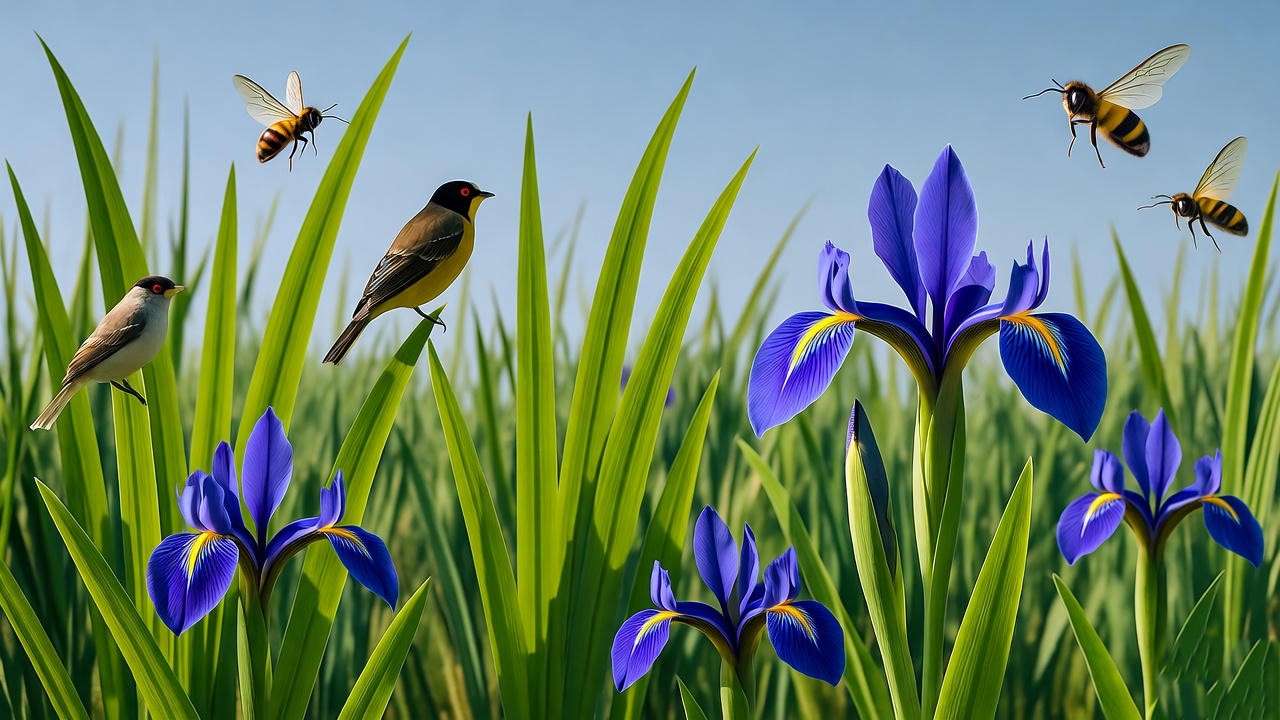
Section 7: FAQs About Swamp Plants ❓
Q1: Can swamp plants grow in regular garden soil?
A: Most swamp plants need consistently moist or waterlogged soil. If your soil drains quickly, amend it with organic matter or grow plants in containers with wet conditions.
Q2: How do I prevent swamp plants from becoming invasive?
A: Use pots or root barriers, especially for aggressive spreaders like cattails. Check with your local extension service for invasive species lists.
Q3: Are swamp plants safe for pets or children?
A: Most are safe, but some (e.g., water iris) may be mildly toxic if ingested. Keep pets and kids away from plants with known toxicity and supervise play areas.
Q4: What’s the best time to plant swamp plants?
A: Spring or early fall, when temperatures are mild, is ideal for establishing roots.
Q5: Can I grow swamp plants in containers or pots?
A: Yes! Use large, non-draining pots filled with rich, moist soil. Submerge partially in water for plants like pickerelweed or lizard’s tail.
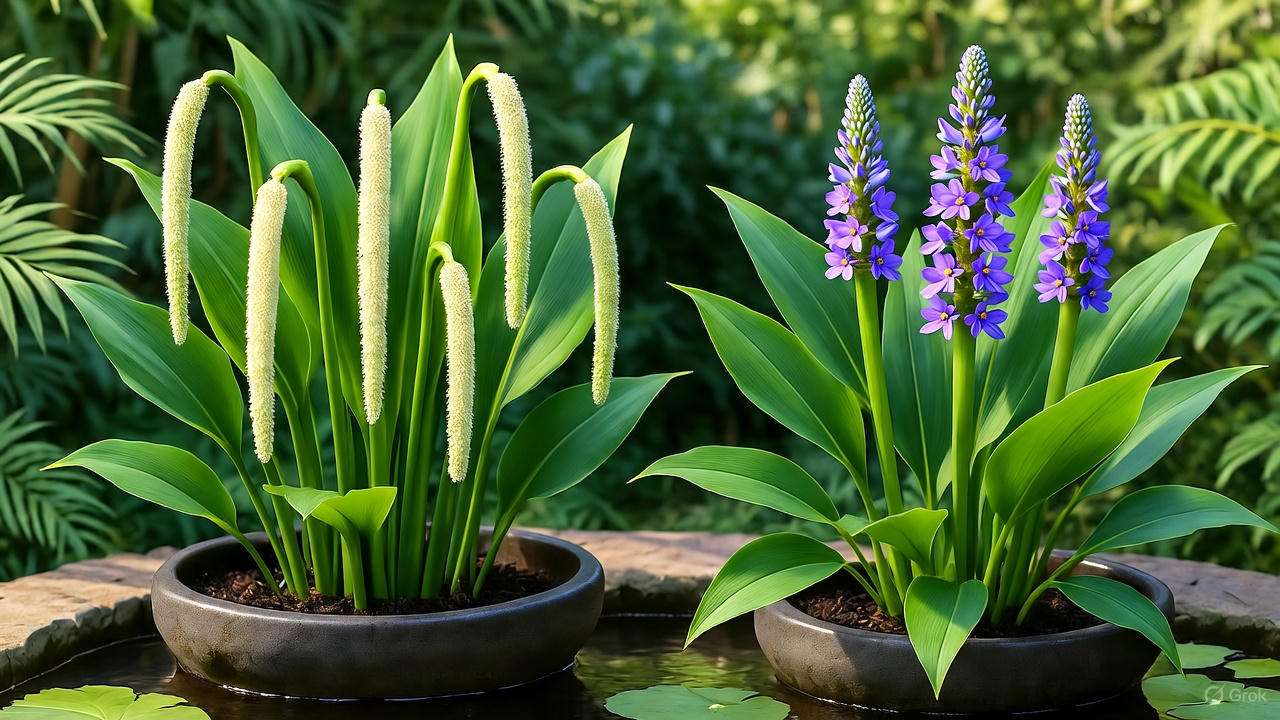
Conclusion: Create Your Dream Wetland Garden Today! 🌸
Swamp plants offer a perfect blend of beauty, sustainability, and ease of care. From the towering bald cypress to the delicate marsh marigold, these plants transform waterlogged spaces into thriving ecosystems. Start planning your wetland garden today—choose a few of these top 10 plants, assess your space, and embrace the joy of eco-friendly gardening. Share your progress in the comments, and explore our articles on rain gardens and aquatic plants for more inspiration. Your garden and the planet will thank you! 🌍

